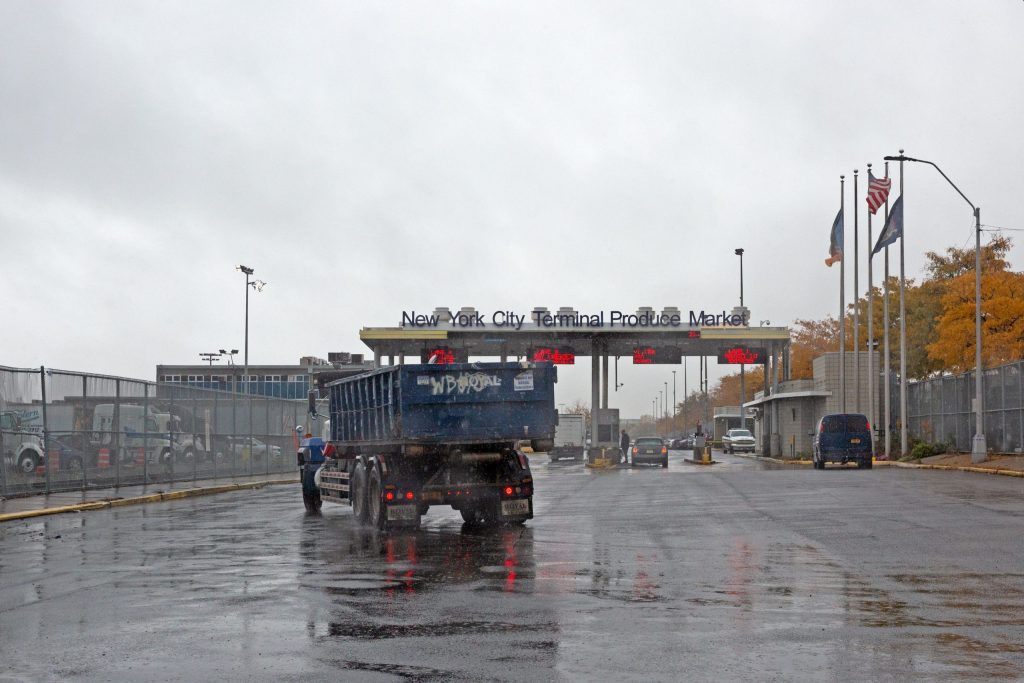Gov. Kathy Hochul’s abrupt U-turn away from a plan to cut congestion by tolling motorists in the core of Manhattan has thrown a state commitment to fund environmental mitigation programs in The Bronx into question.
As part of congestion pricing — which would have slapped tolls on motorists driving south of 60th Street while raising billions of dollars for transit upgrades — the MTA and New York State had agreed to pour $155 million over five years into “communities already overburdened by pre-existing air pollution and chronic diseases.”
But after Hochul hit the brakes on the plan she long championed just weeks before its scheduled June 30 start, the future funding for the Bronx programs in so-called environmental justice communities is up in the air.
An asthma case-management program and center in East Tremont, the planting of roadside vegetation throughout the South Bronx, electrification of diesel-powered refrigeration trucks at the Hunts Point Produce Market and expanding the city’s clean-trucks fleet were among the planned mitigation efforts, according to a Federal Highway Administration report, which was released days after the governor had put an indefinite pause on the new toll.
The MTA had also committed to renovating parks and green spaces across The Bronx, installing air-filtration units in high schools near highways, lowering overnight toll rates and getting the city Department of Transportation to expand its off-hours truck delivery program.
All told, the MTA and New York State had committed a little over $30 million a year for five years as part of the congestion pricing plan, according to the FHA report. The congestion pricing plan had been expected to raise about $1 billion a year that the Metropolitan Transportation Authority could have used to borrow many billions more.
The Bronx has been historically and disproportionately impacted by high asthma rates, with much of that attributed to the air pollution caused by congestion on highways like the Cross Bronx Expressway. In addition to asthma, air pollution is linked to diseases and health conditions like cardiovascular disease, pneumonia and lung cancer.
According to data from the city’s Department of Health, in 2017, 17% of children up to 13 years of age living in The Bronx had been diagnosed with asthma at some point compared to 11% of children citywide. In 2016, the number of Bronx children aged 5 to 17 who had asthma-related visits to the emergency department was more than double that of the children in the rest of the city combined, with particular disparities in Hunts Point, Mott Haven, Highbridge and Morrisania.
Congestion pricing had been expected to increase traffic in the Bronx, as more drivers would have used its crossings into upper Manhattan to avoid the $15 toll.
The city’s Department of Transportation, which heads the clean trucks voucher program, deferred to the MTA when THE CITY requested comment. Hochul’s press office also referred THE CITY to the MTA. The Department of Health, which spearheads asthma programming, did not respond to a request for comment.
“These mitigation efforts are designed to mitigate the effects of congestion pricing which has been paused,” MTA spokesperson Meghan Keegan told THE CITY in a written statement. “If and when the pause is lifted, these mitigations would move forward.”
‘Bargaining Chip’
Hochul announced in a surprise video on June 5 that she would be pausing the congestion pricing plan indefinitely, sparking a pair of lawsuits from transit advocates and a civic association. It has also left ambitious and expensive capital projects, such as making more subway stations ADA-accessible and extending the Second Avenue Subway into Harlem, without apparent funding sources.
Arif Ullah, executive director of South Bronx Unite, an environmental advocacy organization, told THE CITY that Bronx residents needed health resources and that those shoud never have been a pay-off for backing the congestion pricing plan and the further damage it could cause in their neighborhoods.

“Those programs and that funding should never have been used as a bargaining chip for the decades of discriminatory public policies. We should have had those investments and that injection of funding regardless,” said Ullah, who also questioned the preventative use of an asthma center. “We know that there is asthma here. I don’t know what the objective of that asthma center is. One asthma center is not going to address the poor health outcomes in this community.”
The organization supports congestion pricing in principle, he said, but did not back any of the MTA’s proposals.
“We simply could not accept a scenario that resulted in more traffic,” Ullah said.
Nilka Martell, co-founder of Loving the Bronx, another environmental group, said that while asthma programming is welcome, it does not address the larger problem of the borough’s already poor air quality.
“A proper investment would include ways to mitigate the pollution with other measures like capping portions of the highway, installing ventilation systems, with filters to reduce pollutants, planting more trees and install vegetation barriers as forms of green infrastructure to help further remove pollutants,” Martell, one of the leaders of a campaign to cap portions of the Cross Bronx Expressway, told THE CITY in a text.
She added that she hopes elected officials can reflect on the best ways to focus on those kinds of measures during the governor’s indefinite pause on the plan.
“While congestion pricing seeks to lessen traffic and decrease air pollution in an affluent area of Manhattan,” Martell said, it does so at the expense of the already negatively impacted communities of color in the Bronx, particularly the South Bronx which has one of the highest childhood asthma rates.”

